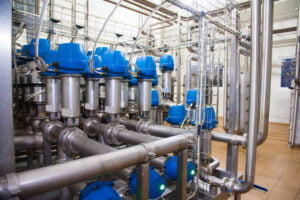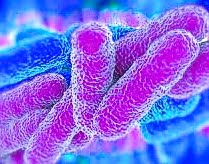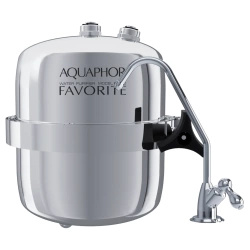
Water treatment is a process of improving the quality of water to the extent that we want to achieve. This means that the process must be tailored to individual needs. It will look different depending on those needs. The tap water treatment, for example, aims to bring the water to a state where it can be drunk without fear while its taste and smell are neutral to the drinker. The process of treating water used in industry will be different. In this case, the water does not need to be of impeccable taste and aroma. On the other hand, it must be as soft as possible not to damage the industrial equipment from limescale.
In nature, water is never pure (H2O) and always carries dissolved substances. They are both desired such as minerals and undesired such as bacteria and viruses. Water treatment is the process by which the quality of water is improved through chemical, physical or mechanical means.
Water treatment methods
Deironing and demanganising
Deironing is the removal of excess iron compounds from water. This is done by binding iron compounds into forms that are insoluble in water. Water with an excess of iron or manganese has an unpleasant odor and metallic taste.
Softening
Softening is the removal from water of compounds and substances that make it hard. The main factors that increase the hardness of water are calcium and magnesium compounds. If the water in your home is hard, you will notice that the inner walls of your kettle and heater are covered with 'scale’. Moreover, the walls of your shower stall may be covered with a white-gray film. Unfortunately, the hard water damages appliances that we are not able to clean regularly such as washing machines, dishwashers and boilers. This damage generates unwanted and unexpected costs. Therefore, if the water in your home is hard, you should consider a water filter.
Disinfection

Water is a very attractive environment for all kinds of microorganisms and bacteria. It is also a transporter of their spore forms. A common disease caused by the contaminated water is Legionella, also known as Legionnaires’ disease. Legionellosis, in other words, is a serious severe pneumonia. You can read more about Legionella on Wikipedia.
Consequently, drinking water straight from the tap is not advisable unless your water is regularly tested or filtered. However, we know from experience that this practice is not popular in many countries. For example, in Poland, the water is frequently boiled as most microorganisms die at temperatures above 60 C.
Reverse osmosis
Water treatment using reverse osmosis is a very effective method of improving water quality. During the process, all microorganisms and mechanical impurities are removed from the water. The water treated via reverse osmosis is often called “ultra pure”. The topic of reverse osmosis is so extensive that we have prepared a series of articles on the subject. Please, refer to our other articles and Water Treatment Handbook.

